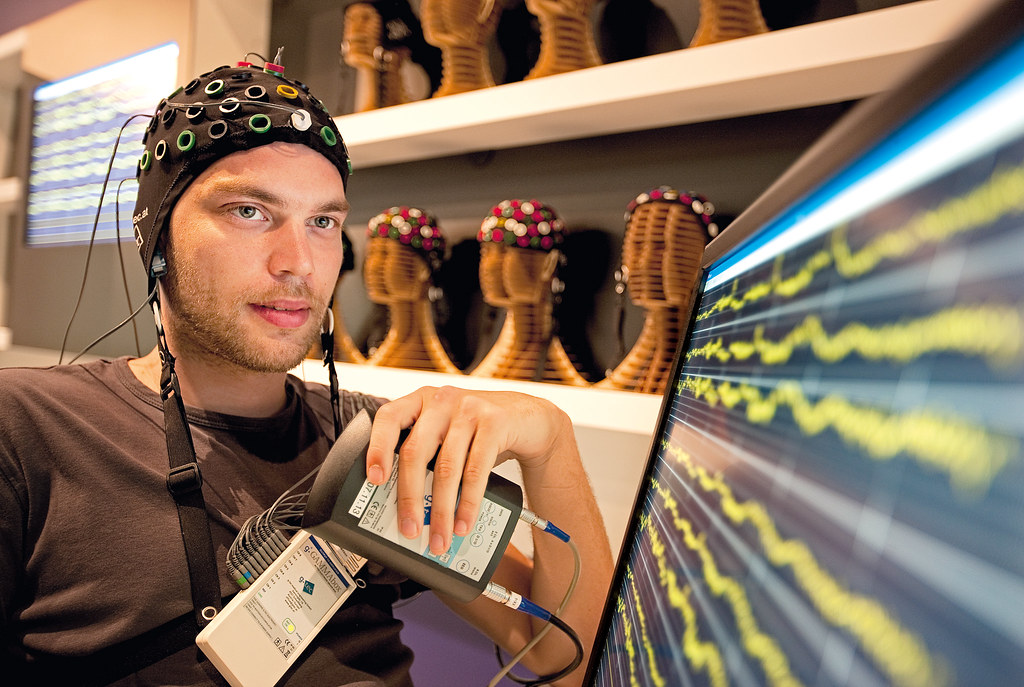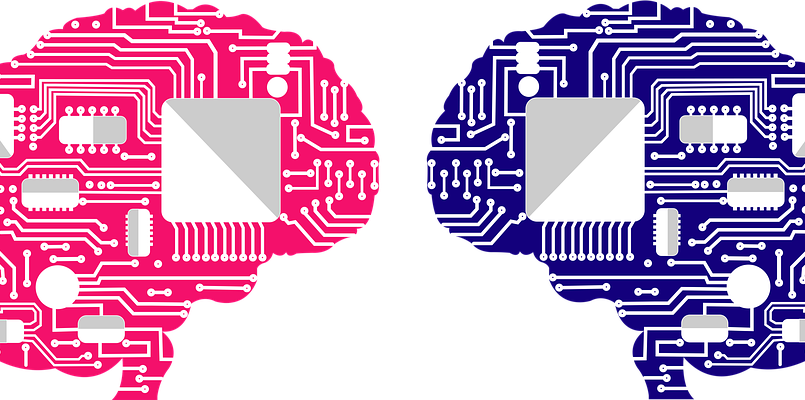Brain Computer Interface will absolutely change the world forever in the ways that we can’t even imagine. Things like full dive virtual reality, having super intelligence and fixing neurological diseases are just to name a few.
With regular advancements in the field of computers and Artificial Intelligence, it is not uncommon to see computers becoming smarter by the day. Who knew computers would be so smart that they can reinterpret what a person thinks?
Scientists from Brown University, Stanford University, Case Western University along with the Providence Veterans Affair Medical Center and the Massachusetts General Hospital collaborated in order to to create the first ever wireless high bandwidth brain computer interface.
There have been developments which include Elon Musk’s Neuralink that involved wireless chips and planted on monkeys.
But this development is notable because it is the first wireless chip and planted on a human instead of a monkey or another animal.
What is Brain Computer Interface(BCI)?
A BCI is a connection between the brain and a computer and while that might seem simple, how do we do that? And what purpose does it serve?
- Assistive technology can be provided through a brain computer interface.

- This enables people with various neurological disorder to manipulate a computer which can help improve their quality of life and their ability to function in the world
- A brain computer interface can allow somebody with paralysis or multiple sclerosis or some other disorder to control a computer which can allow them to communicate to others or perhaps even control a prosthetic limb.

What is Brain Gate?
- Artificial Intelligence has surpassed many of its former boundaries as BrainGate introduces the first computer chip that can wirelessly connect a human brain to a computer.
- The group of collaborators at Stanford, Brow, and Case Western University are known as brain gate and they created the first wireless brain computer.
- The first wireless Brain-Computer Interface test was carried out by BrainGate (BCIs). This phenomenon that seemed like a fictional utopia only to be seen in sci-fi movies is now reality, and it has been tested to see if it works.
- While this technology existed before, the devices were wired and could only be used under the supervision of experts.
- While Wi-Fi allows users to stay wirelessly linked to the internet at all times, these wireless gadgets will aid persons with paralysis, limb loss, or any other neurological or physical disease that prevents them from physically using any equipment.
- Through an electrode array or chip implanted in the motor cortex of the brain, the chip may send data to a computer, which can interpret it and transform it into a set of instructions for the computer to follow, all at the thought of the human brain, without the need to raise a finger, let alone a limb.
- The chip enables people with physical limitations to express themselves without utilising their limbs for motions or writing.
- The system is capable of transmitting brain signals at a single neuron resolution and in full broadband fidelity.
- With the wireless transmission of these impulses, patients may now write on a screen with their thoughts or even control a robotic prosthesis with their brains without any physical movement.
- The significance of this is that the patient is no longer tethered to the computer and so this can allow them to have more mobility and allow them to get back to more of a normal lifestyle.
Working
- Cabled:
- The braingate brain computer interface was cabled and so this tethered the individual to the computer.
- How this works is there’s a micro electrode array which is surgically implanted over the patient’s brain.
- Then that is attached by a cable to an amplifier which then is attached by a fiber optic cable to neural signal processor.
- The neural signal processor decodes the information from the patient’s brain so that they can control the computer.
- While this is a great technology to have the restrictive component is the fact that they are attached by a wire to a computer and that this isn’t very mobile, so a lot of the times these computer systems are in the hospital and so the patient can only use the brain computer interface when they are in the hospital setting.

- Wireless
- The wireless brain interface is a lot more mobile.
- The size of the device is about two inches and it weighs about 1.5 ounces
- The significance of this is that the device is attached to the computer wirelessly, so while we still have the micro electrode array, it is now attached to the BWD or Bandwidth Pedestal Mounted Wireless Transmitter
- This BWD has a wireless receiver which receives the signal from the patient’s brain.
- That information goes to a digital hub and it is then delivered by a fiber optic cable to the same neural signal processor.
- Again the information is then decoded and it is used to control the computer system that the patient is using.
Experiments
- In the study that scientists at braingate did, they had two patients that were originally used in the wired brain computer interface and this was a 35 year old patient along with a 63 year old patient.
- Both patients were paralyzed with spinal cord injuries.
- Around 200 electrodes were implanted on the patient’s brains and with the wireless transmitter we have about about a 36 hour battery life so the scientists were able to record data for 24 hours.
- The benefit of them moving wirelessly at the time that they did was that is was around the beginning of the pandemic so this allowed the scientists to continue their research while the patients were able to stay safe in the comfort of their own home.
- This accessibility that was highlighted by the pandemic is something that will continue to benefit patients around the world.

Should this technology become more of a prominent treatment option for patients dealing with these difficult neurological disorders?
- What the scientists wanted to answer was whether the wireless brain computer interface was as efficient and as effective as the wired brain computer interface.
- As they could see from the study a lot of the data was comparable.
- There was no significant difference between the results and the recordings in the wired situation and the wireless situation.
- In terms of the percent correct, they both are comparable in terms of decoding the neural signals and in terms of the bit rate they both have a similar speed of processing.
- Recordings from a single electrode in the brain computer interface, they both have similar amplitudes and so the signal strength is just as strong in the wireless and the wired brain computer interface.
More About Brain Gate
- Braingate enabled paralyzed users to move a cursor on a compute screen by just thinking about it.
- With this wireless technology the scientists are now able to monitor their clients brain waves over longer periods of time to obtain more information.
- The scientists working on this project hope to use this information to help design algorithms which could be integrated with the brain to restore the communication and mobility of the people that are paralyzed.
- The researchers say that the study represents an early but important step towards major objective and BCI research. They soon hope to have a fully implantable interquartil system that aids in restoring independence for the people that have lost the ability to move.
Limitations
- Brain gate still has a long way to go, they’re still using these big antennas and the signal gets screwed up when people just walk past.
- So they needed to quote reposition the wheelchair for better reception.
- Typing on brain gate is still pretty slow, in 15 minutes they types about 200 characters, around 13 characters per minute.
- They are finding ways to type much faster than clicking on a keyboard.
Conclusion
- Braingate may have found a way to move from this bulky wired brain computer interface to a more accessible wireless brain computer interface.
- The device can change the future, especially for people who have any neurological disease, injury, loss of limb so that they can regain mobility through Artificial intelligence and independence.
- This is great not only for people that are paralyzed but is one of the first steps to a brain to computer interface used by everyone.
- Scientists and even Elon Musk believes that some of the first applications of BCIs before widespread use is fixing different neurological problems that restrict a person’s ability to live a normal life.
- After this we will begin to really understand the use of BCIs which will lead us closer to a world with widespread use of BCIs and full dive virtual reality.











